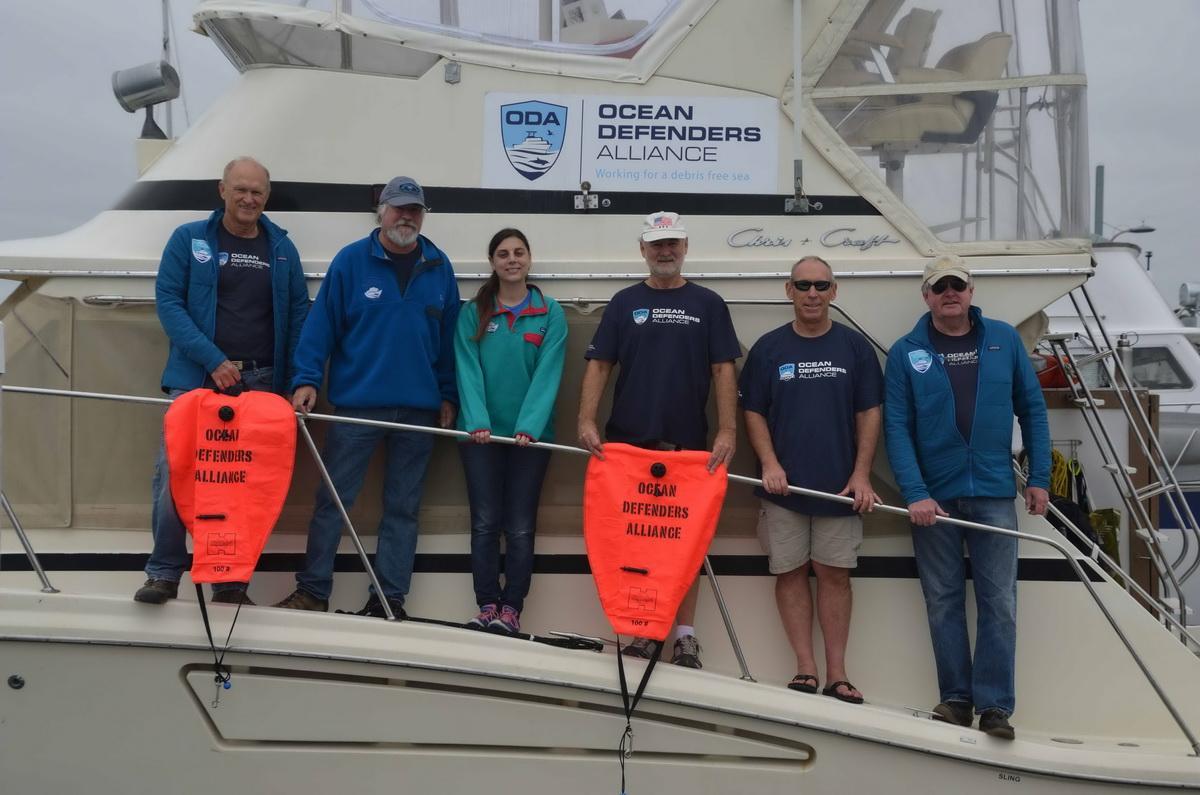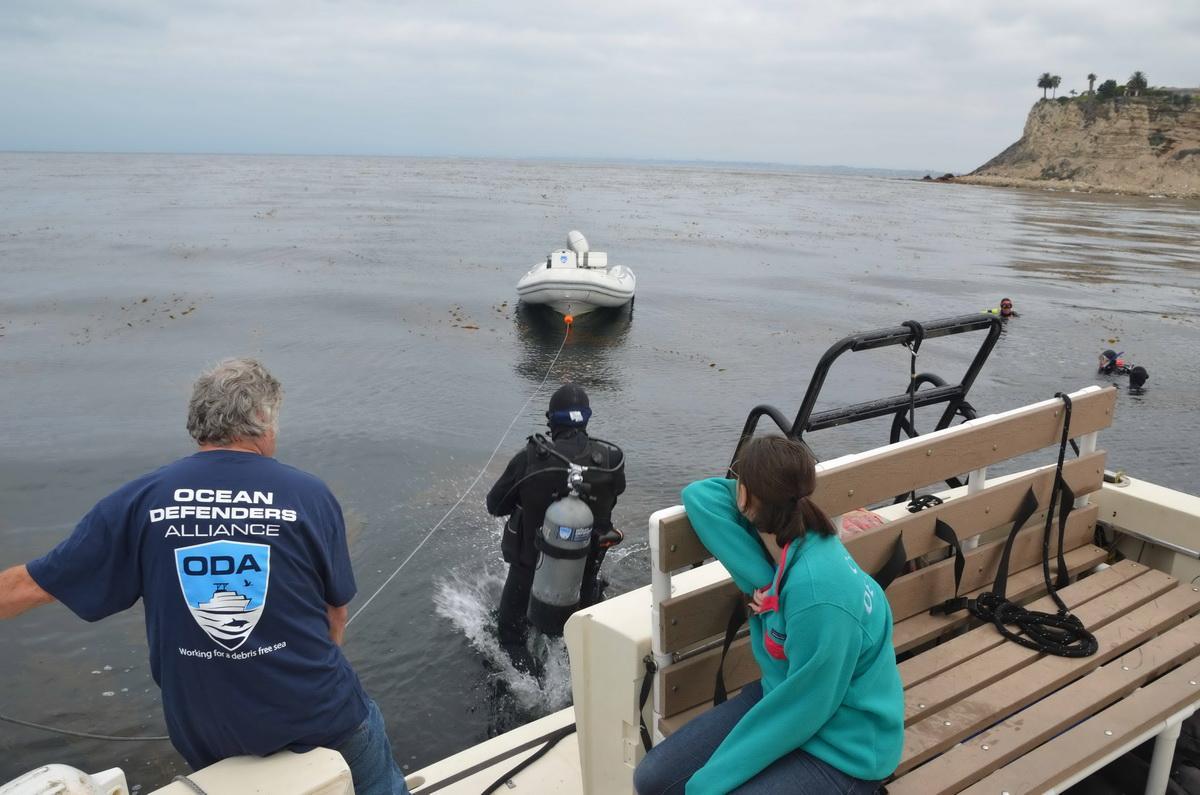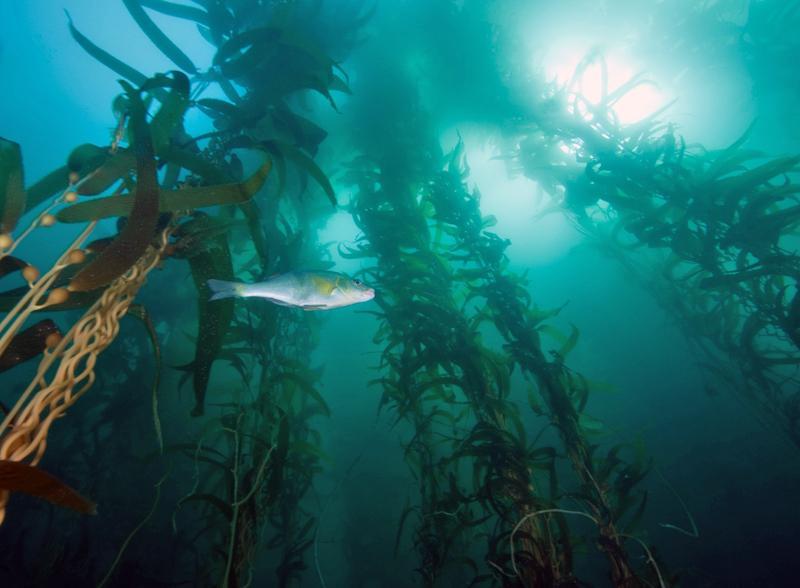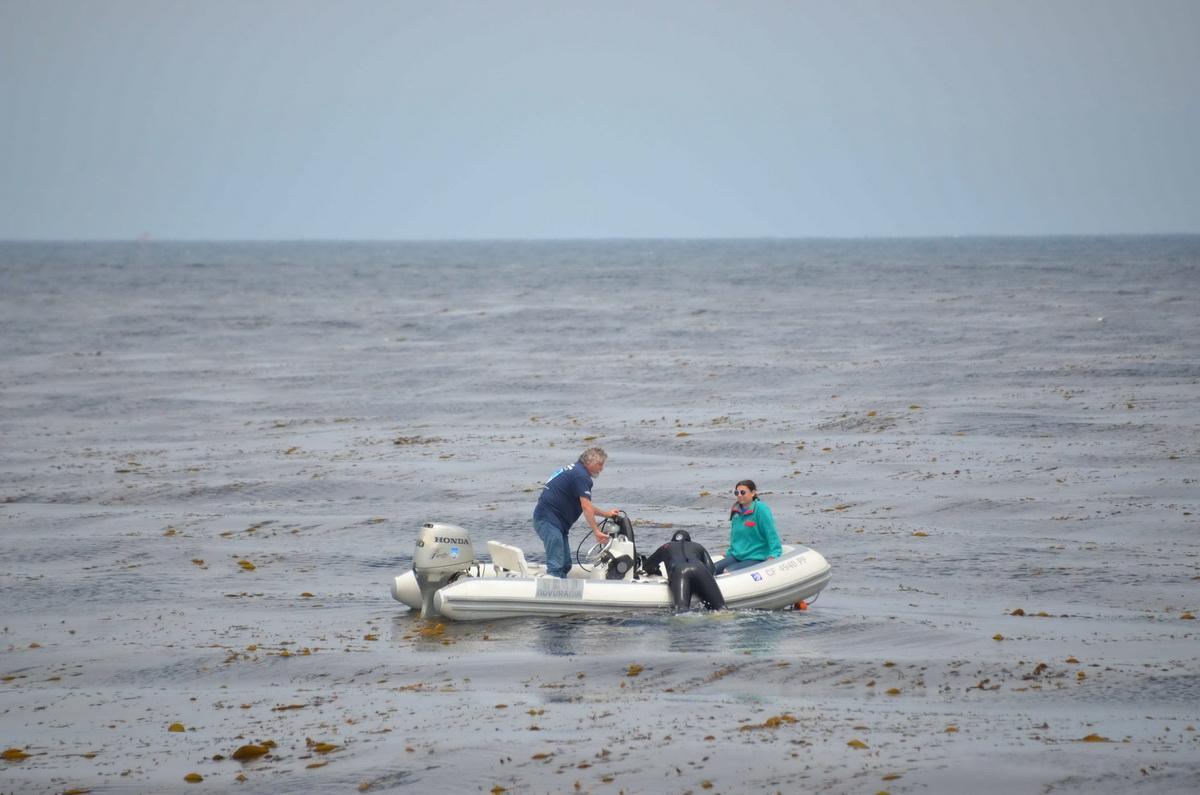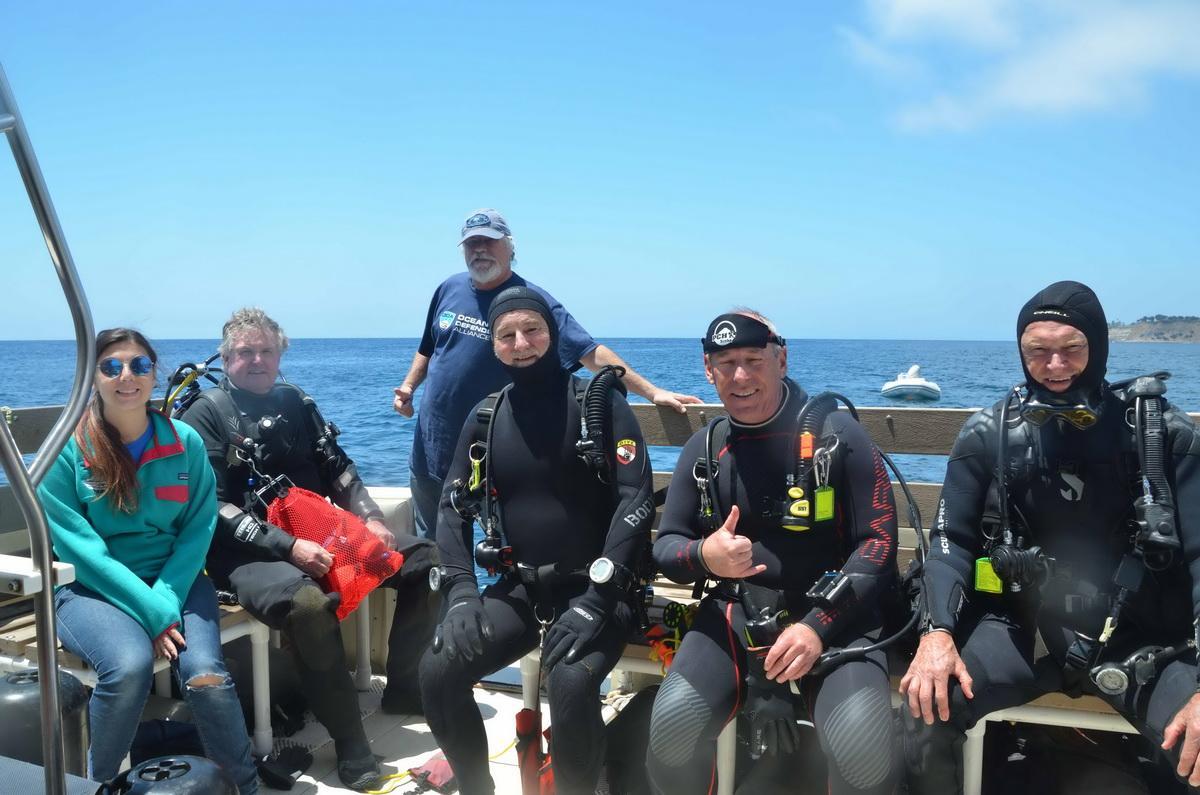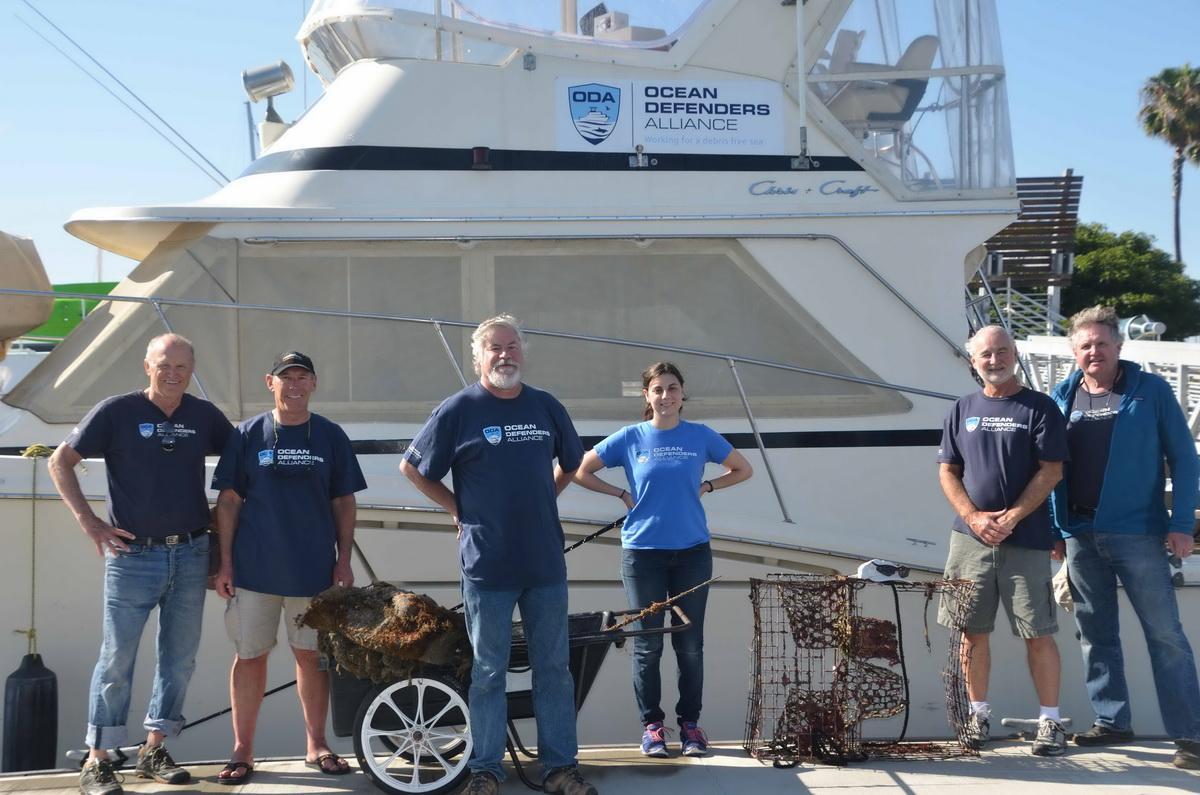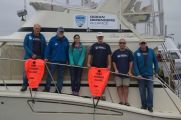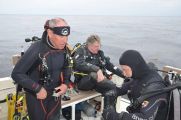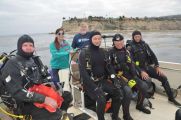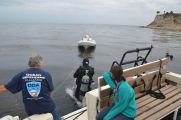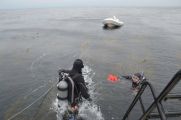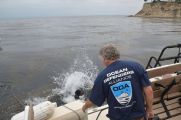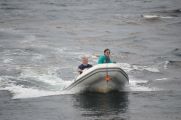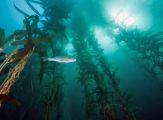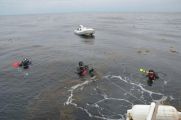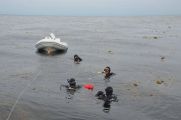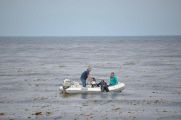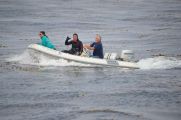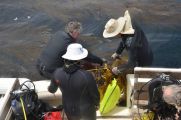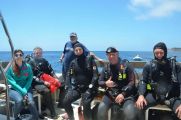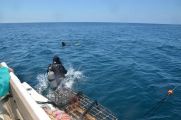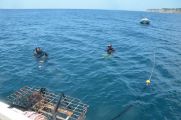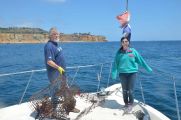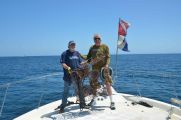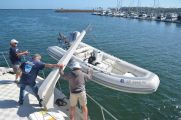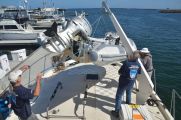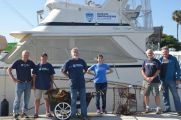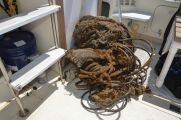By Founder and President Kurt Lieber
With summer in full swing, things are heating up. Get it?! ;-)
ODA had three activities happening this past weekend!
It started off with ODA Volunteer Karla Reinhardt organizing a channel cleanup in Fullerton, California, on Saturday, June 23rd. Karla has put together four of these cleanups now, and she’ll have pictures and a report for you to read very shortly.
Then, about 2,000 miles away, our friends in Hawai’i did an underwater cleanup off the coast of Oahu, on Sunday, the 24th. ODA Volunteer Ken Staples is writing up a report about it, and we’ll share that news, as well as pictures.
Lastly, but NOT leastly (is that a word?) a group of us took our flagship the LegaSea out to do some underwater (UW) cleanup along the coast of Palos Verdes, CA.
June Gloom Don’t Get Us Down
Here in California we are still in the midst of what is called “June gloom”. The days start off overcast and it looks like the sun will never shine. But then, thankfully, it clears up in the afternoon.
So, as we pulled out of the slip in San Pedro, we saw nothing but gray clouds and dark water.
However, the boat was bright with a fun group of people.
The divers were: Dennis Berube, Al Laubenstein, Dave Merrill, and Geoff Walsh. This was Geoff’s first time out with us; he’s a Dive Master. Always nice to have volunteers with high skill sets coming along. Welcome aboard, Geoff!
On deck it was Jeff Connor, Brooke LaDouceur, and myself.
Record Trap Sites and Return to Remove
We headed north out of the harbor and had an uneventful trip to the boundary between Santa Monica Bay and Palos Verdes. Last year, we counted and recorded 180 legally set lobster traps in the area, and so, as usual, after the legal lobster-hunting season ends we return to see if any traps have been forgotten or abandoned. Any trap remaining after the last day of the season may be removed by anyone (and ODA is your only nonprofit dedicated to doing this work!).
When we approached the site where I wanted to drop anchor, I could see acres of kelp floating at the surface. Oh boy, it was so thick I knew if I took the boat any further I’d risk the chance of having the kelp foul my propeller’s. So, we got as close as possible and dropped anchor there.
Too much kelp is a good thing, don’t get me wrong, it’s just that we couldn’t get very close to the spot where we’d seen all those traps. You can see from this picture how large of an area the kelp bed covered.
Diving in Kelp Beds = a treat!
Dennis, Al, Dave, and Geoff gladly jumped in knowing they were in for a wonderful kelp dive.
Diving in a kelp forest has been likened to hiking in the redwood forests. Huge trees with light filtering through the ever-shifting trees and leaves. I can’t argue with that comparison.
Check out this photo below of a Southern California kelp bed, taken by ODA's friend Phil Garner.
Our ODA Divers grabbed their scooters, dropped down into 50 feet of water and headed out to sea. We didn’t see them for another hour. Then at almost the exact 60-minute mark, we saw a lift bag break the surface. But oh my, it was 200 yards away! It’s amazing how much ground you can cover with those scooters.
By this time, Geoff was low on air and didn’t want to crawl over the top of the kelp fronds to get back. So, Jeff and Brooke helped him climb aboard the RIB (rigid inflatable boat) to bring him back to the boat. Dennis, Al, and Dave had enough air to drop back down in the water and navigate their way under the kelp canopy.
Once we got everyone back onboard, we pulled the anchor and retrieved the lobster trap. The guys had a great time. They saw some sharks, bat rays, schools of fish and the vis was fantastic, at 30 plus feet!
Hawthorne Reef – a special place
We then headed about two miles away to a site called Hawthorn Reef, which is about 200 yards from Point Vicente, a Marine Protected Area (MPA). This is one of our regular areas for ghost gear cleanup.
The divers did a one-and-a-half-hour surface break, and then all four divers went down again.
By this time, the sun was out, you could see Catalina, and the waters suddenly looked blue. We thought the UW vis (visibility) was going to be good as well, but that was not to be the case. It turned out to be less than 10 feet!
This reef is a really pretty site, and unusual in that it is surrounded by acres and acres of nothing but sand. But the reef itself is a series of rocks and boulders that rise up about 15 feet off the sand. It is an oasis for anemones, bottom dwelling fish, nudibranchs and lobsters.
And of course, where there are lobsters you can bet there will be traps set there during the legal hunting season.
Debris of All Kinds Removed
So, the divers headed down to the reef and after a while we saw a lift bag at the surface. Then two divers popped up right next to it. A few minutes later, the other two surfaced.
This time the divers didn’t find any lobster traps, but they did find something that is even more destructive to the benthic life: a large rug! It would smother anything it covered; and as the water motion moves it around, it can wreak a lot of havoc. In addition to that, our expert debris-removal divers hauled out 10 fan belts, a fishing pole, hundreds of feet of fishing line, some netting, and about 100 feet of thick rope. In all, it weighed about 120 pounds.
As we headed back to port, all the divers were pumped about all the nice wildlife they got to see. What a wonderful way to dive: Enjoy the beauty of nature while giving back at the same time!
So of course, we all were super pumped about all the wildlife we protected by getting rid of all this man-made marine debris.
If you want to enjoy the ocean while giving back to it, please fill out our volunteer application. But, if you can’t make it out on one of our boats in Southern California or Oahu or Maui, Hawaii, you can live vicariously through the crew by supporting them financially. Either way, we need and appreciate YOU! :-)


